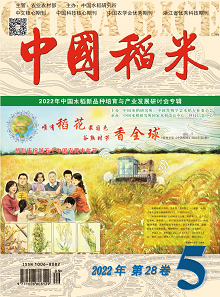In this paper, the development of high-quality hybrid rice varieties in south China, including two stages, were summarized. The first stage is the development of high-quality hybrid rice with medium amylose content(AC). During this period, eight male sterile lines of rice with better grain shape, less chalkiness and good transparency, such as Bo A, Qiu A, Mei A, Yuetai A, Tianfeng A, Wufeng A, Rongfeng A and Jifeng A, were bred, and 149 high-quality hybrid rice varieties with medium amylose content, such as Boyou 998, Tianyou 998, and Wuyou 308, were developed by using these 8 male sterile lines as female parent. In addition, 9 two-line hybrid rice varieties with fine quality, such as Peizashuangqi, Peizataifeng, etc., were also developed by using P/G MS line Pei’ai64S. The second stage is the development stage of high-quality hybrid rice with low amylose content, and 13 high-quality sterile lines including Yuefeng A, Taifeng A, Yexiang A, Guang 8A, and Toyota 1A have been bred, and totally about 212 high-quality hybrid rice varieties with low amylose content, such as Taifengyou 208, Yexiangyou Lisi, and Fengtianyou 553, were developed by using these 15 male sterile lines as female parent. Moreover, Huazhan and Bing 4114 and 8 high-yield and disease-resistant and high-quality conventional rice, such as Wushansimiao, Yuenongsimiao, Wushanyouzhan, were used as restorer lines, and 175 high-quality hybrid rice varieties have been developed and released for commercial production. Since 2015, averagely more than half of the top ten hybrid rice varieties of annual planting area in China, were bred or cooperatively bred by using the MS lines or restore lines developed in south China. The improvement of rice grain quality and breeding in south China played an important role in development of high-quality hybrid rice production. In the end, the current problems of high-quality hybrid rice varieties in south China and the prospects of breeding were discussed.

